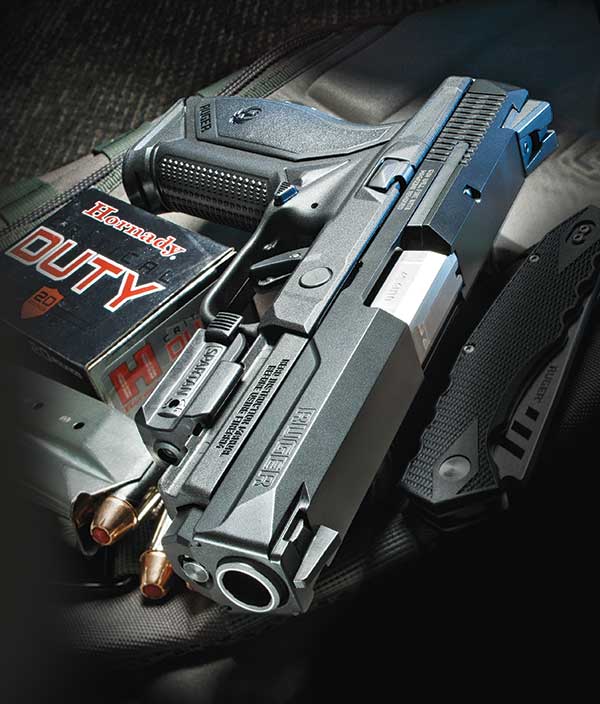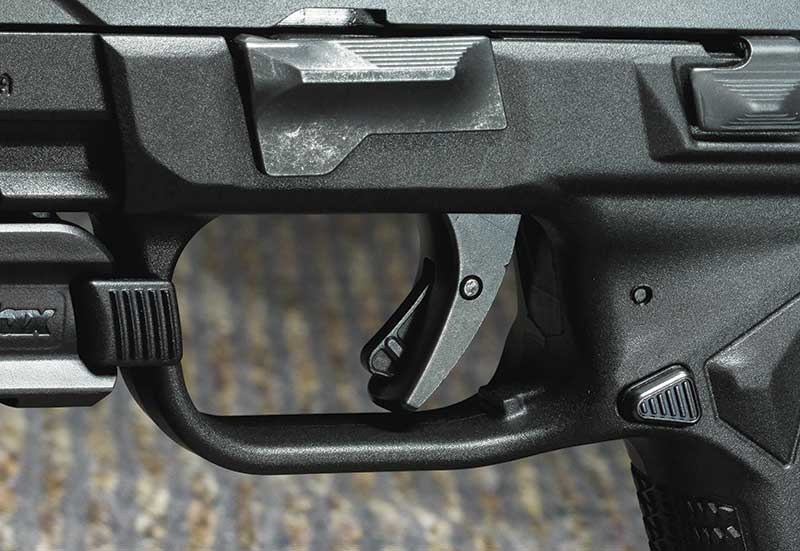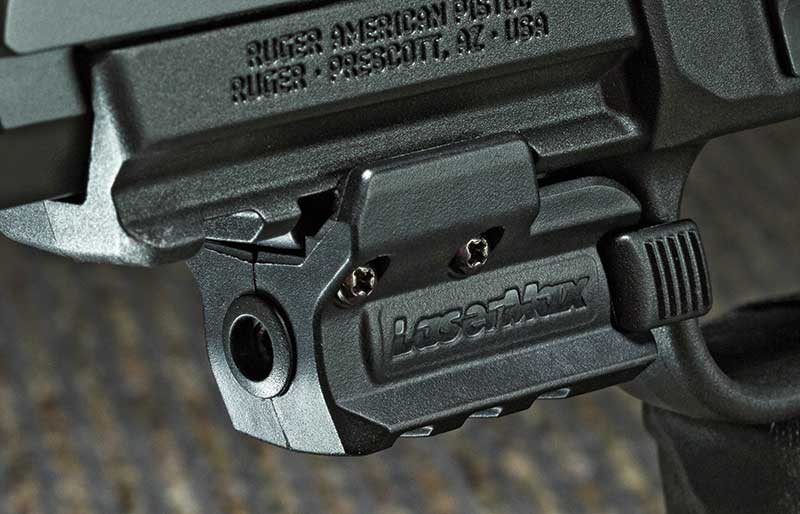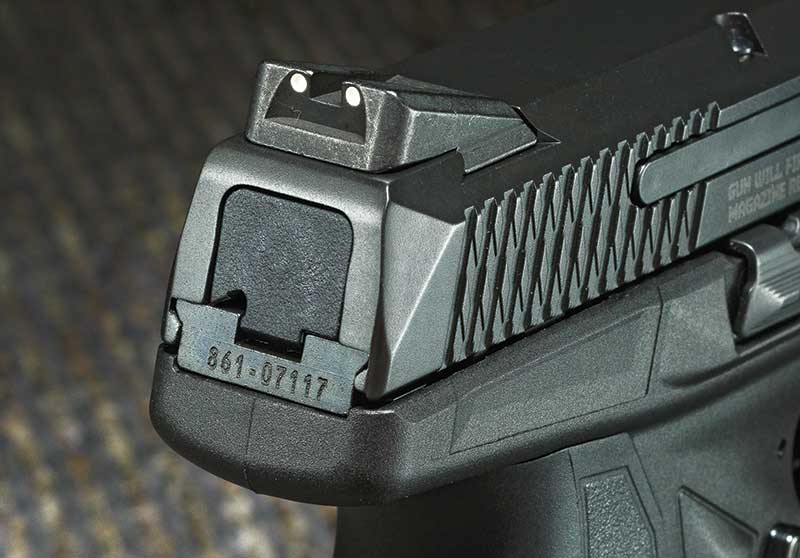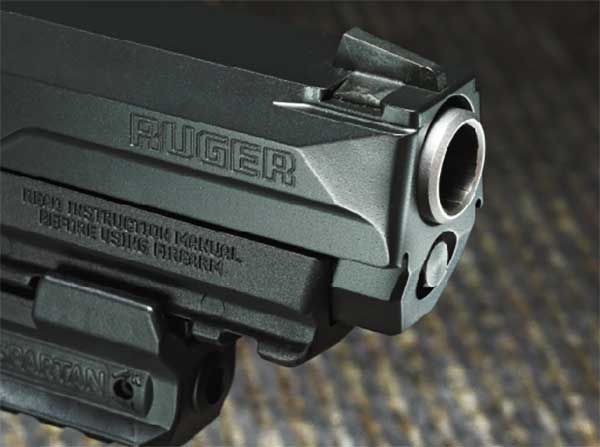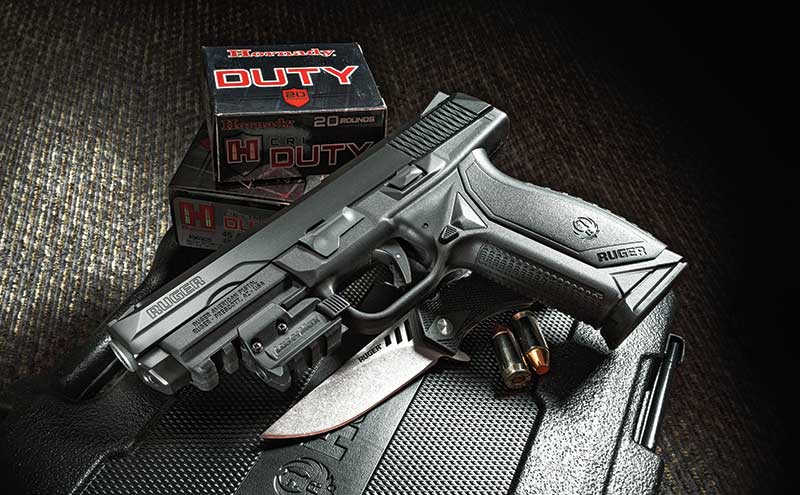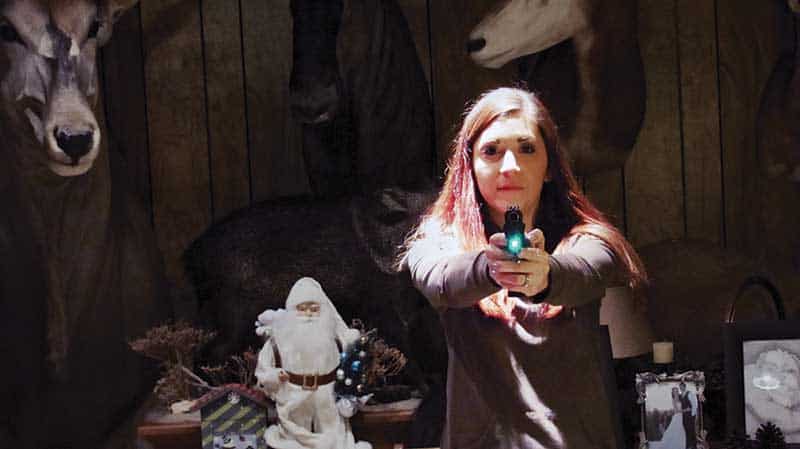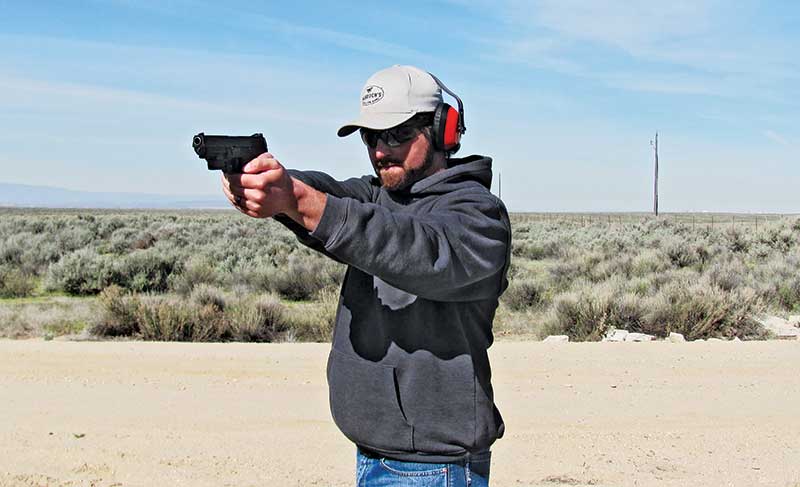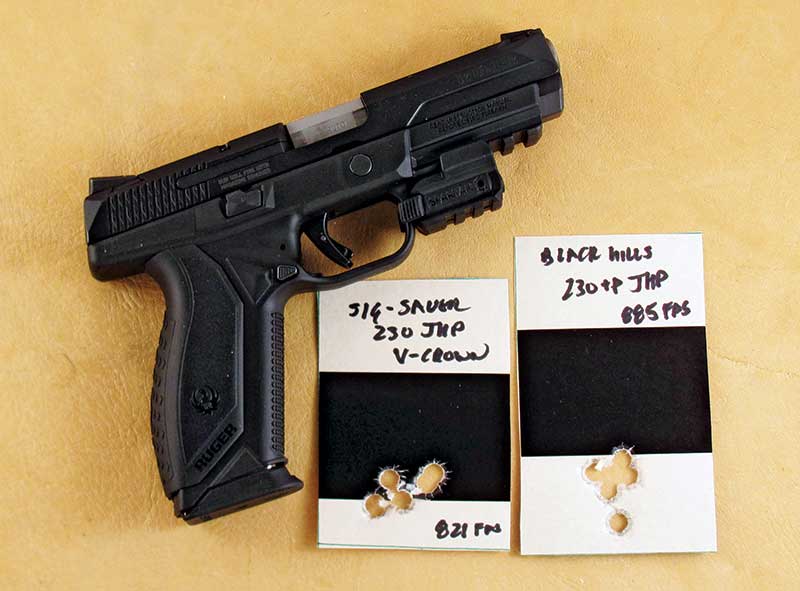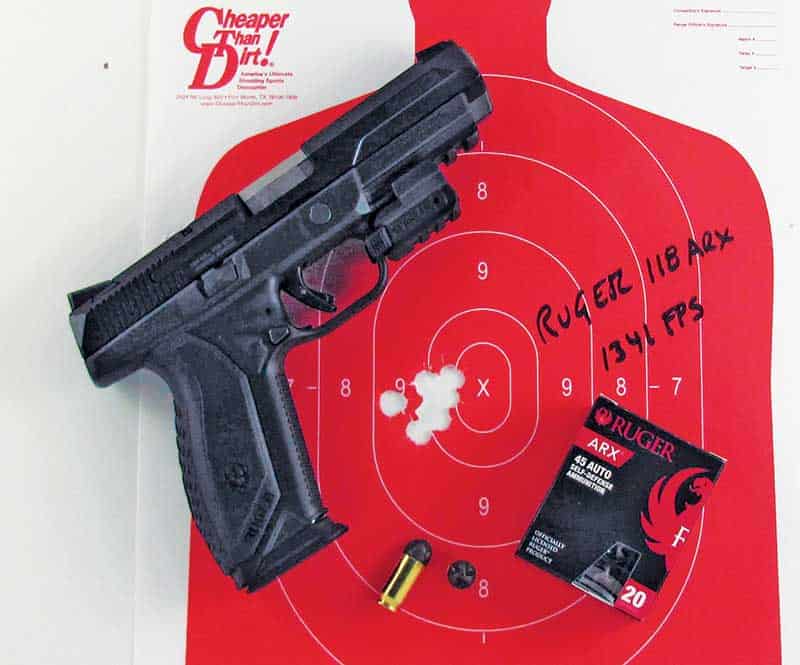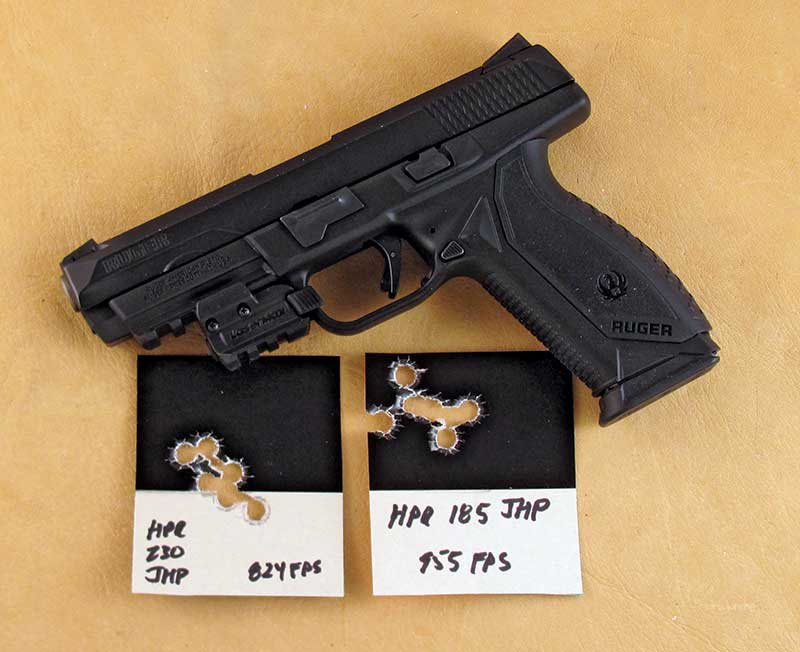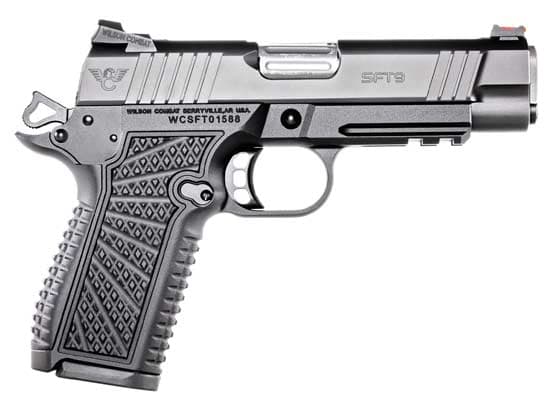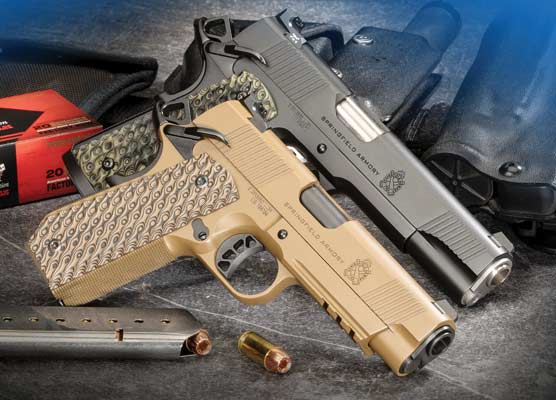First-Generation American
Ruger's Auto-A Modular, Striker-Fired Powerhouse
In .45 ACP — Could Be A Game-Changer
Sixty years ago I bought my first Ruger. At the time they were making .22 semi-autos and single actions—the Standard Model, the Mark I and the Single-Six. Bill Ruger, however, had just added centerfires into the mix—the Blackhawk and Super Blackhawk in .357 and .44 Magnum. Everything Ruger offered was designed for the target shooter, plinker outdoorsman and hunter. Most of the country was still living in Norman Rockwell’s world.
Those days are pretty much gone. The major market today for handguns is self-defense and concealed carry. For a long time Ruger stayed on the path of only offering guns for pleasant pastimes, however, as the country has changed in so many negative ways, the company has met these changes by offering some of the best self-defense options possible at reasonable prices.
The latest offering from Ruger is the American, offered in both .45 ACP and 9mm. It’s not designed for hunting, target shooting or outdoor carry (even though it could be used in those capacities). The major reason for the Ruger American was to offer a tough gun to face a tough world.
In my somewhat limited use of this Ruger American so far, I think the United States military could do a lot worse than take a serious look at it. I don’t know of any law enforcement agencies which have selected a Ruger semi-auto as a duty sidearm, but I think the American would be an excellent choice. I wouldn’t be surprised if many LE agencies did, as the American is offered in 9mm, which seems to be the first choice of both military and LE today. I definitely like the way the American sits low in my hand, which helps to reduce felt recoil as well as muzzle flip.
The Ruger American .45 ACP I tested is striker fired with a magazine capacity of 10 rounds. A trigger safety is employed, which must be depressed before the pistol will fire. Pulling the trigger disengages the internal trigger safety and releases the internal striker block. Then, as the trigger moves rearward, the striker is released from the sear and the pistol fires. When this happens, the barrel cams downward from its locked position allowing full recoil of the slide and the extraction and ejection of the fired case. The slide then moves forward, a new cartridge is chambered and the barrel cams back upward into its locked position in the slide.
The barrel is stainless steel with a length of 4-1/2 inches. The weight of the .45 ACP version is 31.5 ounces. The trigger pull, according to my Brownells gauge, is right at 7 pounds. I will check with my gunsmith Tom at Buckhorn to see if he can bring it down to between 4 and 5 pounds.
The slide is 1.05 inches in width. It’s made of stainless steel with a black nitride finish to match the black frame. The slide has striations on both sides at the rear to facilitate racking, and there is an ambidextrous slide stop located on both sides of the frame. When the last round is fired, the slide stop is automatically activated. It can also be manually engaged.
The American’s sights consist of a Novak Lo-Mount rear with two white dots plus a front blade with a white dot as well. Both front and rear sights are set in a dovetail. The rear has a locking screw and is adjustable for windage. At the top of the slide to the rear of the barrel is a loaded-chamber viewport allowing you to see if a cartridge is in the chamber when the slide is closed.
The frame of the pistol is made from glass-filled reinforced nylon (1.19 inches at its widest point). The frontstrap of the grip has an aggressive textured pattern for a secure hold. It is matched up with what Ruger calls a “Modular Wrap-Around Grip System” consisting of two interchangeable wraparound backstraps (one medium, one large), tailored to individual trigger-reach requirements and fill in the palm of your shooting hand.
My American came with the medium backstrap installed and this felt like a good fit for me. I didn’t even bother to try the large one. A 4-slot Picatinny rail is molded into the bottom of the frame in front of the triggerguard for installing a laser or light.
The American has an ambidextrous magazine release on both sides right behind the trigger. Magazines release easily and are designed with gripping grooves in the floorplate to make for easy insertion into the well. Each gun comes with two 10-round nickel/Teflon-plated magazines.
The takedown lever is located above the trigger on the left side. To disassemble the gun, place the trigger in the forward position and remove the magazine, lock the slide open using the slide stop and rotate the takedown lever clockwise until it stops, pull the slide rearward to drop the slide stop and pull it forward to remove it from the frame. Once all this is accomplished, the guide rod assembly and barrel can be removed.
The Ruger American is first and foremost a self-defense/carry pistol. It can be made even better with the LaserMax Spartan, which is exceptionally compact, easily securing to the accessory rail. It is actuated by dual electronic touchpads which ride on each side of the front of the triggerguard. A touch with the trigger finger turns on the steady laser beam, or you can opt for a high-visibility pulsating beam. The Spartan is available in green for $149 or red for $99. It is also easy to adjust for windage and elevation with the provided Allen wrench. To preserve battery life in case you inadvertently leave it turned on, the beam shuts off after 10 minutes.
I used nine different factory loads to test the American .45 with bullet weights of 185, 200 and 230 grains as well as the newest 118-grain Poly-tip ARX load, marketed by Ruger. The bullet of the Ruger ARX is somewhat shaped like the tip of a twisted Phillips-head screwdriver––it’s effective because it twists as it penetrates. I didn’t expect such a lightweight bullet to come anywhere close to hitting point of aim, but it was basically right on at both 7 and 20 yards. At 7 yards, it cut a group less than 1-inch with five of the six in the same hole. Muzzle velocity of the lightweight bullet is over 1,340 fps, while recoil is exceptionally mild. The fastest traditional load tried was the Double Tap 185-grain JHP at 1,152 fps. It grouped at just over an inch as did HPR’s 185-grain JHP at 955 fps.
Every handgun has its own personality and this Ruger was no exception. The three best groups fired came with 230-grain bullets from three manufacturers. All grouping 5 shots into 1-inch were Black Hills 230-grain JHP +P (896 fps), HPR’s JHP (824 fps) and the newest offering from SIG SAUER, the V-Crown JHP (821 fps). I would not hesitate to use any of these loads for self-defense.
Feeding and ejection was flawless with every load I tried. As one who has been shooting Ruger .45 semi-autos for well over 25 years, this is exactly what I have come to expect. With a retail of less than $580 and a real street price which will probably be even less, this should be an excellent seller and very well received by self-defense or CCW users as well as anyone who is just searching for a dependable, everyday packin’ pistol.
Ruger’s Semi-Auto Evolution
In 1987 Ruger entered the centerfire semi-auto market with the 9mm P85. Compared to all other major 9mm’s, the P85 was relatively large and bulky. The P85 arrived about the same time as the 9mm GLOCK 17, which started to really gain in popularity as we began to see some very effective 9mm defense loads being offered.
Compared to the GLOCK, the Ruger P85 had pretty much of a “big ox” look and feel. But what it lacked in form, it certainly made up for in function. From the very beginning, the P85 was totally dependable. It simply always worked. I used mine as the only non-LEO shooting in the 200-member county officers’ qualification course, and it beat out all the other fancier and more expensive 9mm’s.
For Ruger, the 9mm P85 was only the beginning––they soon added a .45 ACP and .40 S&W version, all the while continually upgrading their centerfire semi-autos to reduce their size and bulkiness. I not only purchased that P85 more than 30 years ago, I also added a P90 in .45 ACP and a P91 chambered for in .40 S&W as soon as they became available.
I pretty much ignored the other Ruger semi-autos until the arrival of the KP345 a few years back. With this polymer-framed pistol, Ruger revolutionized their semi-auto line and, soon after, went in a new direction with the SR series.
Over a period of two decades, Ruger moved toward more compact models and polymer frames, culminating in the KP345. I’ve kept one equipped with both a laser and light beside my bed ever since it was introduced. I sleep a lot better knowing it is within reach.
All of these pre-SR series guns have external hammers. The SR was the first non-P series pistol and is striker-fired. Ruger’s SR series began with the SR9 which was then followed by the SR40 and, finally, the SR45.
Now with the Ruger American, the company is continuing on with the same American-name theme, including their newest bolt-action rifle.
American Maker: Ruger Firearms
Type: Semi-auto, Caliber: .45 ACP (tested), 9mm, Capacity: 10+1, Barrel Length: 4.5 inches, Overall Length: 8 inches, Weight: 31.5 ounces, Finish: Black nitride, Sights: Novak Lo-Mount 3-dot, Grips: Wraparound synthetic (interchangeable inserts)
